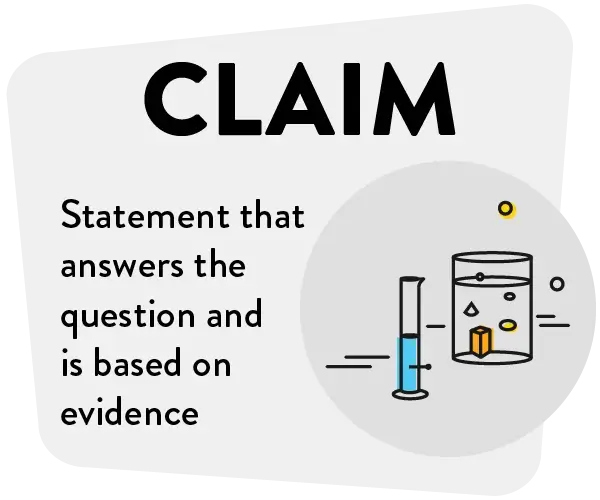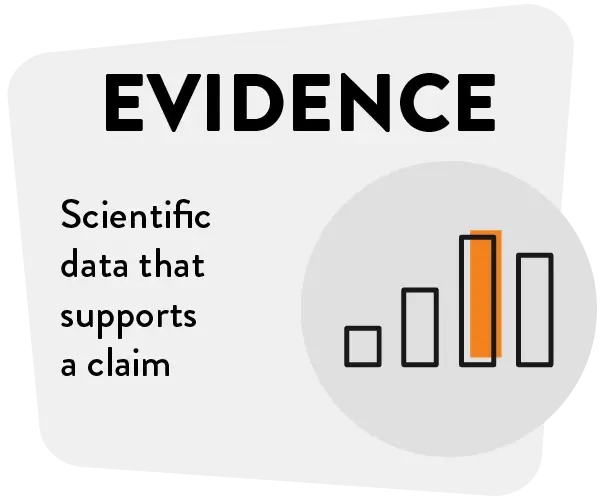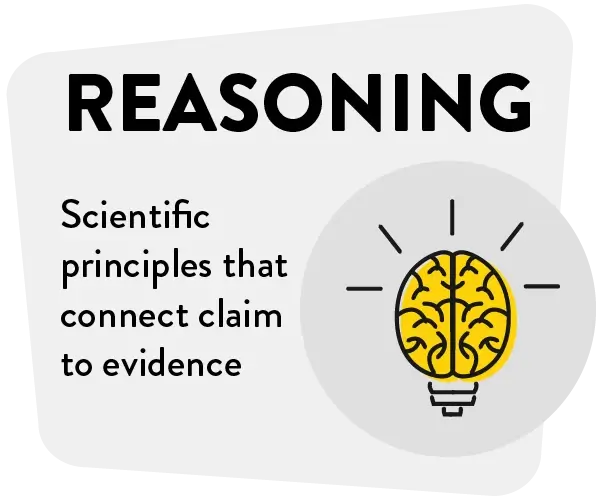
Nearly all new science standards emphasize learning experiences that encourage students to actively engage in science and engineering practices while connecting them with core scientific concepts through real-world problem-solving. This new focus results in increased scientific sensemaking and three-dimensional learning in the classroom.
One critical dimension of three-dimensional learning includes science and engineering practices. Let’s take a closer look at what these practices include.
What are the science and engineering practices?
The Next Generation Science Standards (NGSS) and other state standards emphasize three distinct dimensions of learning science.
- Dimension 1: Science and Engineering Practices
- Dimension 2: Crosscutting Concepts
- Dimension 3: Disciplinary Core Ideas
These science and engineering practices (sometimes called NGSS science and engineering practices, SEPs, or NGSS SEPs) describe the behaviors scientists use to investigate and develop models and theories about the natural world and the practices engineers apply to design and build models and systems.
There are eight core science and engineering practices:
- Asking questions (for science) and defining problems (for engineering)
- Developing and using models
- Planning and carrying out investigations
- Analyzing and interpreting data
- Using mathematics and computational thinking
- Constructing explanations (for science) and designing solutions (for engineering)
- Engaging in argumentation from evidence
- Obtaining, evaluating, and communicating information
Building a framework for K-12 instruction
When students engage with science and engineering practices, they learn like scientists as they investigate, build models, and test ideas. The NGSS SEP list provides teachers with a framework for learning that will grow with students throughout school and into their future careers.
Science and engineering practice activities for students should revolve around analyzing and interpreting data in authentic contexts. Hands-on activities allow students to explore and collaborate with each other to investigate and solve problems. Seek out learning experiences that require students to plan and conduct investigations from the initial step of questioning through evaluating and communicating their findings.
Supporting scientific sensemaking and inquiry-based learning with SEPs
Inquiry-based learning fosters students’ understanding of STEM topics, allowing them to actively engage with science and engineering practices and core ideas through exploration and questioning.
Traditional teaching models tend to use approaches that define the problem for students, who then answer questions and learn vocabulary terms. Labs are often set up with specific instructions to follow. Learning happens, but it’s more of a copy-and-paste process rather than deep inquiry.
Science and engineering practices offer students chances to dig deeper into science education. Science sensemaking only occurs when students can act like scientists and have engaging and relevant learning opportunities that allow them to make sense of the world and beyond.
Virtual simulations and case studies like ExploreLearning Gizmos allow students to think and problem-solve like STEM experts as they naturally engage with science and engineering practices in ways that extend beyond a textbook. Gizmos STEM Cases are award-winning case studies that put students in the role of STEM professionals tasked with solving real-world problems.
With STEM Cases, students learn science concepts while designing solutions to solve real-world problems. The interactive online case studies let students form and test ideas to find solutions—just like real scientists. Students learn scientific concepts, use critical thinking, and apply scientific practices as they use data to form and test hypotheses and communicate their findings.
The claim-evidence-reasoning (CER) model also seamlessly integrates with the science and engineering practices. The CER framework supports science and engineering practices by helping students think and communicate like scientists and engineers.



- Claim: Encourages students to make a statement or conclusion based on their observations or data, which mirrors how scientists and engineers form hypotheses or design conclusions.
- Evidence: Requires students to use data from experiments, investigations, or research to support their claims. This aligns with the practice of analyzing and interpreting data and engaging in arguments from evidence, both core science and engineering practices.
- Reasoning: Allows students to connect their evidence to their claim using scientific principles or concepts. This supports the SEPs of constructing explanations and developing and using models.
By using CER regularly, students strengthen their ability to communicate scientific thinking, justify solutions, and engage in critical thinking, all essential components of science and engineering practices.
Supporting NGSS science and engineering practices with virtual lab
NGSS science and engineering practices take students away from paper, pencil, and books and put them into the role of scientists and engineers. They use critical thinking, ELA, collaboration, and math skills. They experiment and record processes. They collect data and communicate results while answering questions for science.
Gizmos support the science and engineering practices
High-quality instructional materials (HQIM) are critical for supporting science and engineering practices in the classroom. Gizmos virtual labs and investigations encourage real-world problem-solving with a full suite of interactive inquiry-based simulations for grades 3-12 that support and enhance core curricula to encourage scientific sensemaking.
All types of Gizmos align with state and NGSS standards to help students confidently engage with science and engineering practices in meaningful ways.
- Gizmos Simulations: A vast library of over 550 interactive math and science simulations and virtual labs designed for flexibility and open-ended exploration.
- Gizmos STEM Cases: Immerse students in real-world, in-depth case studies that allow them to solve problems from the lens of a STEM professional.
- Gizmos Investigations: Coming fall 2025, new Gizmos Investigations facilitate deeper scientific sensemaking practices by leveraging Gizmos within engaging, ready-made investigations driven by student inquiry.
Research found that increased Gizmos usage was significantly related to improved student achievement on NGSS-aligned state assessments. Additional research found that 8th-grade students at schools with higher Gizmos usage were 1.6x more likely to meet or exceed test proficiency standards than those with lower Gizmos usage.
What about the youngest science students? Students in grades K-2 begin their journey in science and engineering practice activities with Science4Us, like Color Changing Plants and Homemade Slime.
Explore Hands-On Experiments
Want to take advantage of more opportunities to engage your students with NGSS science and engineering practices? Take a trial!
